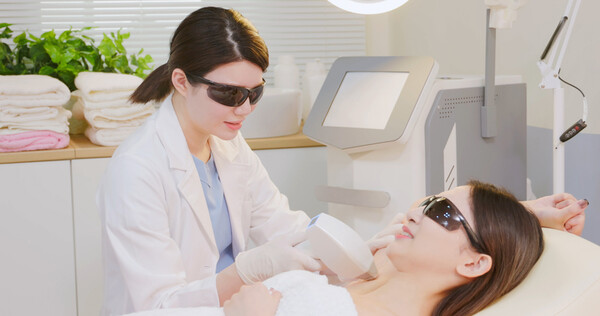The Korean government’s plan to abolish a value-added tax (VAT) refund for foreign tourists receiving cosmetic surgery and other aesthetic medical services has sparked alarm across the country’s medical tourism industry.

On July 31, the Ministry of Economy and Finance (MOEF) announced during the Tax System Development Review Committee meeting that it would terminate the VAT refund benefit for foreign patients undergoing cosmetic and dermatological procedures by Dec. 31, 2025, as part of its 2025 tax reform plan.
Introduced in April 2016, the temporary measure was designed to stimulate Korea’s burgeoning medical tourism sector and attract high-value consumption linked to the Korean Wave. It allowed foreign tourists to claim refunds of approximately 100,000 to 200,000 won ($72-144) per procedure, depending on the treatment type.
Citing steady growth in foreign medical tourism and the policy’s fulfillment of its intended purpose, the government decided against extending the refund program beyond its current deadline.
While the final decision awaits deliberation during the National Assembly’s autumn session, industry experts view the measure’s termination from Jan. 1, 2026, as virtually certain.
Industry stakeholders are divided over the impact. While some argue Korea’s globally renowned expertise in cosmetic dermatology will cushion any immediate fallout, many worry the long-term consequences could erode the country’s competitiveness in medical tourism.
“After years of pandemic disruptions and geopolitical instability that decimated foreign patient inflow, we are only now seeing a meaningful recovery,” a plastic surgeon who operates a clinic in Gangnam, Seoul, said, asking to remain anonymous. “Ending the VAT refund reverses this momentum at a time when global competition for medical tourists is fierce and pricing incentives matter.”
A dermatologist who operates a clinic in Dongtan showed mixed feelings.
“Korea’s reputation for advanced and safe cosmetic procedures may limit short-term declines,” he said. “However, without the VAT refund, foreign patients will face higher out-of-pocket costs, which could push them toward cheaper alternatives or delay their visits.”
Another plastic surgeon clinic owner warned of broader industry repercussions.
“The decision will directly hit cosmetic surgery-focused clinics and indirectly affect providers offering health checkup packages. Reduced spending could trigger cutthroat price competition,” she said. “Medical tourism is a hybrid sector combining healthcare, travel, and consumption, so policy shifts must consider the sustainability of this ecosystem rather than short-term tax collection.”
A growing backlash has emerged, including a petition on the National Assembly’s public platform titled “Prevent the collapse of Korea’s medical tourism industry,” urging the government to reverse course.
The petitioner, reportedly an industry insider, pointed to data from the Korea Institute for Industrial Economics and Trade, which showed foreign patient numbers nearly doubled to 1.17 million in 2024 from 600,000 the previous year.
These patients and their companions spent an estimated 7.5 trillion won on medical tourism, indirectly driving 13.8 trillion won in domestic production, 6.2 trillion won in added value, and nearly 140,000 jobs.
“Ending the refund is like killing the goose that lays golden eggs,” the petitioner wrote. “For the sake of collecting a few hundred billion won in VAT, we risk losing tens of trillions in broader economic impact.”
The government’s expectations for increased tax revenue will likely prove illusory if foreign patient inflow declines, the petitioner added.
The petitioner also highlighted concerns have been raised about a resurgence of illegal brokers and tax evasion, which plagued the industry before the refund system was introduced.
Meanwhile, according to data submitted to Rep. Nam In-soon of the Democratic Party by the Korea Health Industry Development Institute (KHIDI), VAT refund claims for cosmetic procedures reached 413,276 by June 2024, already surpassing the 383,665 recorded in 2023.
From 2016 to mid-2024, refunds totaled 146.7 billion won across more than 1.2 million claims.
Foreign patients seeking cosmetic dermatology services most frequently underwent skin rejuvenation, whitening, anti-aging, and pore treatments, accounting for 62,683 claims in the first half of 2024, followed by wrinkle reduction (23,740), double eyelid surgery (14,213), fat-dissolving injections (5,910), and liposuction (3,864).
Japanese patients comprised the largest share of foreign visitors for cosmetic procedures between 2019 and 2023, totaling 228,901 or 43.6 percent, followed by Chinese (31.2 percent), American (11.6 percent), Thai (11.4 percent), and Mongolian (2.2 percent) patients.
During that time Rep. Nam criticized the repeated extensions of the temporary VAT exemption, noting, “The policy has refunded nearly 150 billion won to date, exacerbating tax inequities with Korean citizens and diverting focus from broader healthcare priorities.”
Related articles
- Why so many young Japanese women are flying to Korea for skin treatments
- Korea sees record 1.17 million foreign patients in 2024, driven by dermatology boom
- Medical Korea 2025 to showcase AI-driven healthcare innovation, global cooperation
- Foreigners from 189 nationalities made 9.42 million payments at Olive Young in 2024
- Gangnam Unni secures $30 mil. in series C to expand global and B2B business
- Foreign patients rate Korean medical services highly in 2023 but meal satisfaction remains a concern
- Korea’s healthcare services rank No. 5 globally in perception survey
- Foreign medical tourists to Korea quadruple in a decade, spending $5.2 bil. in 2024
- Telemedicine and visa hurdles slow Korea’s medical tourism growth: experts

